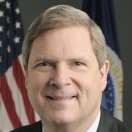
Ed. note: This is cross-posted from the USDA Blog, see the original post here.
These days, it seems like it’s easier than ever to turn a good idea into reality. This is the era of Kickstarter, where entrepreneurs can connect with potential investors at the click of a button.
Of course, it takes more than money to grow an idea. It takes an atmosphere that fosters creativity and rewards innovation. And at a deeper, less obvious level, it requires strong, secure infrastructure—roads and bridges, but also internet access and community facilities like hospitals and schools—that improves connectivity and access to information, moves products to market, and makes communities competitive and attractive to new businesses and investments.
Part of the challenge we face in rural America is that in too many places, infrastructure is outdated and cannot support the same kinds of opportunities that are easily found in cities and larger towns.
USDA itself has a strong record of supporting rural infrastructure upgrades. Our Rural Development program has a loan portfolio of over $200 billion direct and guaranteed loans. Yet, there continues to be significant unmet demand for investment in rural America that exceeds our capacity.
We can’t address this disparity alone, which is why this week, USDA, as part of the White House Rural Council, hosted the first-ever Rural Opportunity Investment Conference. This conference brought together key people from the investment community, rural areas and government to make the business case for investing in rural America.
In conjunction with the conference, we also announced a new $10 billion Rural Infrastructure Opportunity Fund. Supported entirely by private sector dollars with an initial investment from CoBank, a national cooperative bank and member of the Farm Credit System, and managed by Capitol Peak Asset Management, the Fund offers a sustainable platform for new kinds of investors to inject billions into rural infrastructure projects.
Up until now, we have faced a major hurdle when it comes to making the connection between the demand for investment in rural areas and the financial community. The new Fund serves as a proof point that rural America is a promising investment. The financial community should look at investing in rural America not just as a good thing to do—there is a huge opportunity for them to see a return on their investment in rural America as well.
The Fund represents a new approach to USDA’s support for job-creating projects across the country. It allows us to act as a matchmaker between strong projects and potential private investors and expands our capacity to facilitate rural investment beyond what we can do alone.
Rural America needs strong, stable infrastructure in order to meet the current demand for food and farm products, as well as the growing demand in areas such as renewable energy, local and regional food, and the bioeconomy. To attract young people to rural America, prevent rural “brain drain," and ensure a stable rural workforce, we have to make sure that rural areas offer the same breadth of opportunity that cities can offer and that starts with strong, modern infrastructure.
These are high-potential areas that will create jobs and stimulate growth, which makes rural infrastructure not just a rural issue—it’s a national economic issue, too.
We believe that this Fund and the communities brought together for the first time at this week’s conference are a key part of addressing the unmet demand for rural investment. If we can inject even a small portion of the enormous amount of available investment capital in the United States into rural projects, we can help to foster an environment that spurs rural innovation and ensures that rural America remains open for business.
To see how USDA has invested in your state, visit www.usda.gov/opportunity.


